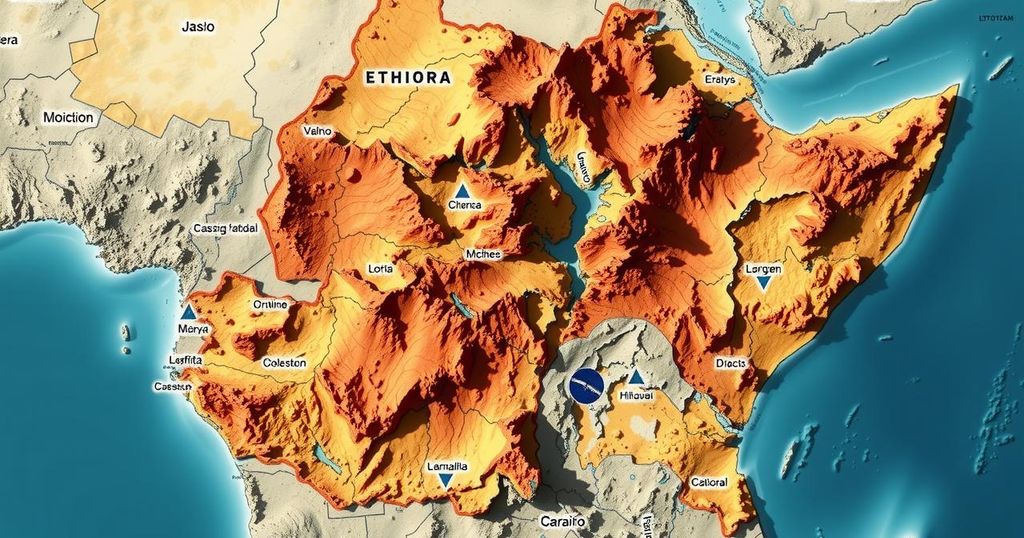World news
ABD, ABDELKARIM EL AMIN, AFAR, AFRICA, AID OPERATIONS, CLIMATE, CLIMATE CHANGE, DA, DABANGA, DABANGA – RADIO TV ONLINE, DISASTER MANAGEMENT, EGYPT, EL AMIN, EMERGENCY RESPONSE COORDINATION CENTRE, EUROPEAN CIVIL PROTECTION AND, EUROPEAN CIVIL PROTECTION AND HUMANITARIAN AID OPERATIONS –, FLOODING, GFZ, GFZ HELMHOLTZ CENTRE FOR GEOSCIENCES, GRAND ETHIOPIAN RENAISSANCE DAM, NATURAL DISASTERS, RADIO TV, SUDAN, US GEOLOGICAL SURVEY
Ethan Kim
0 Comments
Ethiopia Earthquakes: Expert Assures No Threat to GERD Despite Recent Activity
Recent earthquakes in Ethiopia have caused widespread evacuations but experts assure that they pose no significant threat to the Grand Ethiopian Renaissance Dam (GERD). The dam, located over 100 kilometers from the seismic activity, is designed to withstand earthquakes. Experts call for an investigation into the GERD’s environmental impacts, underscoring the need for scientific collaboration between Sudan and Ethiopia.
Recent seismic activity that has affected the Afar region of Ethiopia, resulting in the evacuation of over 80,000 individuals, has raised concerns about the potential impact on the Grand Ethiopian Renaissance Dam (GERD) in Sudan. However, experts, including geoscientist Abdelkarim El Amin, reassuringly indicate that the earthquakes are occurring more than 100 kilometers away from the dam. The GERD has been designed to endure seismic events, even under maximum operational capacity.
The latest significant earthquake, measuring 8.1 on the Richter scale, struck near Addis Ababa, following two smaller quakes earlier in the week. Observations indicate that, while these natural events could have severe humanitarian impacts, they do not pose a direct threat to the structural integrity of the GERD, which has undergone comprehensive geological assessments. El Amin emphasized that, historically, dams are engineered to withstand seismic disturbances, noting that most are resilient to such events.
Concerns persist regarding the GERD’s operational capacity, particularly due to observed low water levels in its reservoir lake. Nonetheless, experts deem the likelihood of adverse effects from recent seismic activity minimal. El Amin further commented, “What is important is that the area where the GERD is built is far from the earthquake zone in eastern Ethiopia,” illustrating the technical safeguards in place.
In a worst-case scenario, should a structural failure occur, the ramifications would be catastrophic, potentially inundating extensive areas in Sudan and adversely affecting significant dams along the Nile. Given the geological vulnerability of these regions, such assessments warrant further examination by experts. Enhanced collaboration among scientists and policymakers to address issues relating to the GERD’s environmental impacts has been suggested. Overall, the discussion emphasizes the significance of a thorough, prudent approach in managing water resources across the Nile Basin to avert potential crises.
The Grand Ethiopian Renaissance Dam (GERD) is a major infrastructure project constructed along the Blue Nile in Ethiopia, designed to generate hydroelectric power and support regional development. The dam, which has been a source of contention among Ethiopia, Sudan, and Egypt, particularly regarding water sharing and environmental impacts, has undergone seismic assessments to ensure its resilience against natural disasters. Recent earthquakes in Ethiopia’s Afar region prompted fears about the dam’s safety and the potential negative consequences for downstream nations; however, experts are working to mitigate these concerns through scientific analysis and international cooperation.
In summary, while the recent earthquakes in Ethiopia’s Afar region have understandably raised alarms about the integrity of the Grand Ethiopian Renaissance Dam, experts believe that the dam is well-engineered to withstand seismic activities. Although there are legitimate concerns over the environmental and hydrological implications of the GERD, especially in terms of flooding in Sudan, effective scientific collaboration is crucial in addressing these challenges adequately. Enhanced dialogue and comprehensive studies among the concerned stakeholders are essential to ensure sustainable management of water resources in the region.
Original Source: www.dabangasudan.org




Post Comment